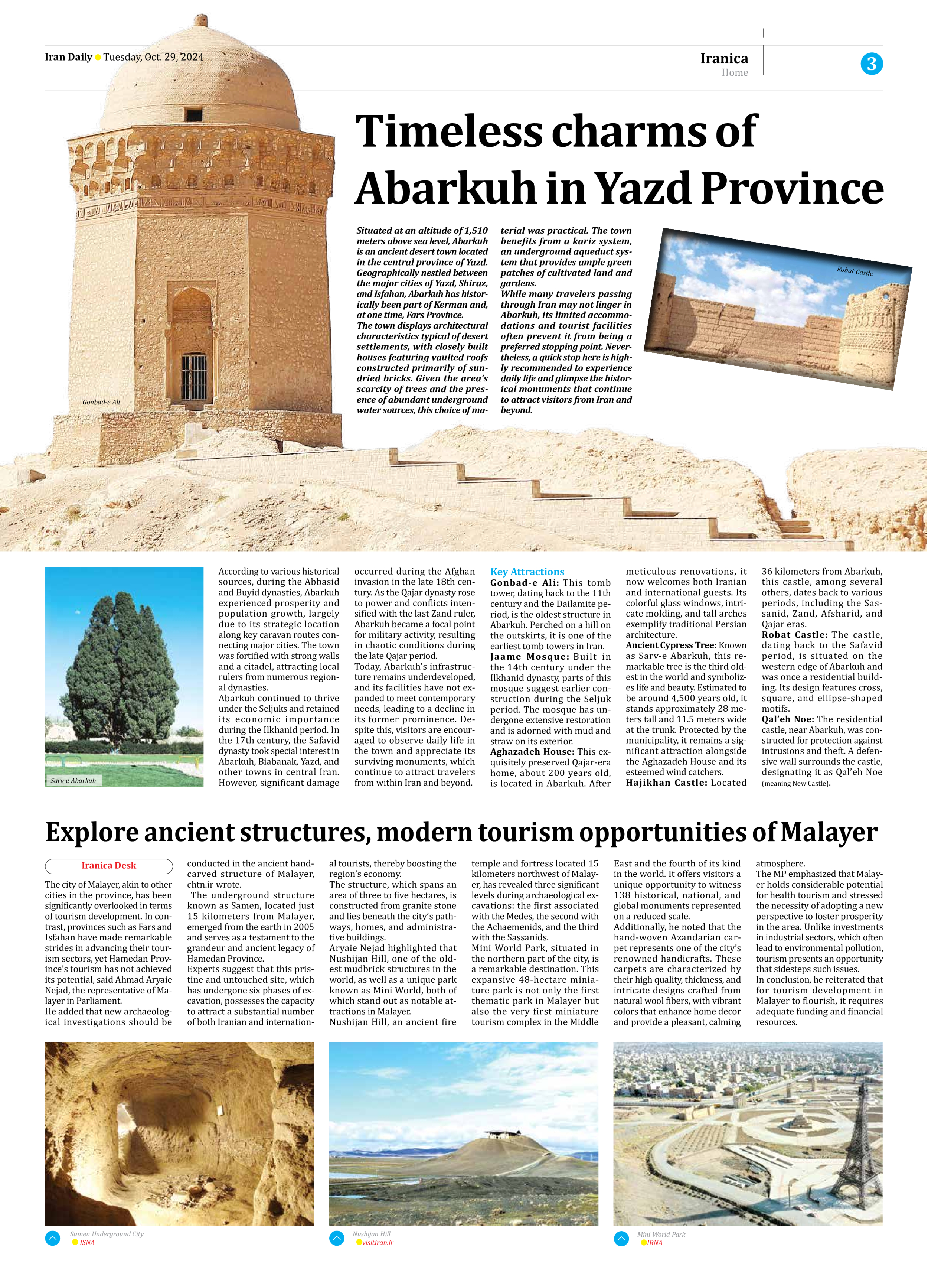
Timeless charms of Abarkuh in Yazd Province
Situated at an altitude of 1,510 meters above sea level, Abarkuh is an ancient desert town located in the central province of Yazd. Geographically nestled between the major cities of Yazd, Shiraz, and Isfahan, Abarkuh has historically been part of Kerman and, at one time, Fars Province.
The town displays architectural characteristics typical of desert settlements, with closely built houses featuring vaulted roofs constructed primarily of sun-dried bricks. Given the area’s scarcity of trees and the presence of abundant underground water sources, this choice of material was practical. The town benefits from a kariz system, an underground aqueduct system that provides ample green patches of cultivated land and gardens.
While many travelers passing through Iran may not linger in Abarkuh, its limited accommodations and tourist facilities often prevent it from being a preferred stopping point. Nevertheless, a quick stop here is highly recommended to experience daily life and glimpse the historical monuments that continue to attract visitors from Iran and beyond.
According to various historical sources, during the Abbasid and Buyid dynasties, Abarkuh experienced prosperity and population growth, largely due to its strategic location along key caravan routes connecting major cities. The town was fortified with strong walls and a citadel, attracting local rulers from numerous regional dynasties.
Abarkuh continued to thrive under the Seljuks and retained its economic importance during the Ilkhanid period. In the 17th century, the Safavid dynasty took special interest in Abarkuh, Biabanak, Yazd, and other towns in central Iran. However, significant damage occurred during the Afghan invasion in the late 18th century. As the Qajar dynasty rose to power and conflicts intensified with the last Zand ruler, Abarkuh became a focal point for military activity, resulting in chaotic conditions during the late Qajar period.
Today, Abarkuh’s infrastructure remains underdeveloped, and its facilities have not expanded to meet contemporary needs, leading to a decline in its former prominence. Despite this, visitors are encouraged to observe daily life in the town and appreciate its surviving monuments, which continue to attract travelers from within Iran and beyond.
Key Attractions
Gonbad-e Ali: This tomb tower, dating back to the 11th century and the Dailamite period, is the oldest structure in Abarkuh. Perched on a hill on the outskirts, it is one of the earliest tomb towers in Iran.
Jaame Mosque: Built in the 14th century under the Ilkhanid dynasty, parts of this mosque suggest earlier construction during the Seljuk period. The mosque has undergone extensive restoration and is adorned with mud and straw on its exterior.
Aghazadeh House: This exquisitely preserved Qajar-era home, about 200 years old, is located in Abarkuh. After meticulous renovations, it now welcomes both Iranian and international guests. Its colorful glass windows, intricate molding, and tall arches exemplify traditional Persian architecture.
Ancient Cypress Tree: Known as Sarv-e Abarkuh, this remarkable tree is the third oldest in the world and symbolizes life and beauty. Estimated to be around 4,500 years old, it stands approximately 28 meters tall and 11.5 meters wide at the trunk. Protected by the municipality, it remains a significant attraction alongside the Aghazadeh House and its esteemed wind catchers.
Hajikhan Castle: Located 36 kilometers from Abarkuh, this castle, among several others, dates back to various periods, including the Sassanid, Zand, Afsharid, and Qajar eras.
Robat Castle: The castle, dating back to the Safavid period, is situated on the western edge of Abarkuh and was once a residential building. Its design features cross, square, and ellipse-shaped motifs.
Qal’eh Noe: The residential castle, near Abarkuh, was constructed for protection against intrusions and theft. A defensive wall surrounds the castle, designating it as Qal’eh Noe (meaning New Castle).







